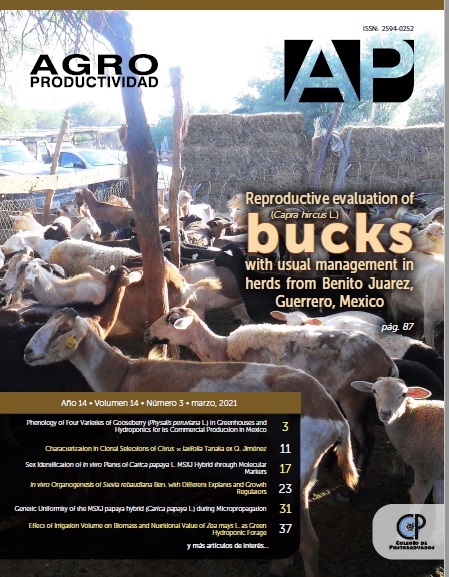Effect of Irrigation Volume on Biomass and Nutritional Value of Zea mays L. as Green Hydroponic Forage
##plugins.themes.bootstrap3.article.main##
Keywords
Forage, hydroponic, maize, biomass, digestibility
Resumen
Objective: To evaluate the effect of irrigation water volume on biomass production and
to quantify the nutritional value of green hydroponic maize forage (GHMF) for sheep.
Design/Methodology/Approach: Three treatments were used to evaluate water
irrigation volume: T1) 9.48 L m 2 day -1 ; T2) 18.95 L m 2 day -1 ; and T3) 28.43 L m 2 day -1 ,employing a completely randomized statistical block design. To determine nutritional
value, four inclusion levels of GHMF were used (0,20.40, 60% BS) in the diet of 16
sheep. A completely randomized statistical design was used as well as a linear
regression model.
Results: A greater weight in fresh biomass of GHMF was observed with T3 (P<0.01).
The values of apparent digestibility of DM, OM, CP, NDF, and ADF of GHMF oscillate
between 80 and 89%. The estimated digestible energy was 3.9 megacalories/kg DM.
Study Limitations/Implications: Forage production in the dry tropics is characterized
by being markedly seasonal; however, GHMF represents a viable alternative for the
rapid and sustainable production of forage with high nutritional value for animals.
Findings/Conclusions: The greatest yields in fresh biomass of green hydroponic
maize forage are obtained by using a greater volume of irrigation water. Likewise, the forage has high nutritional value for sheep, with considerable delivery of digestible
energy, thus it can be used as an excellent source of forage in animal feeding.

